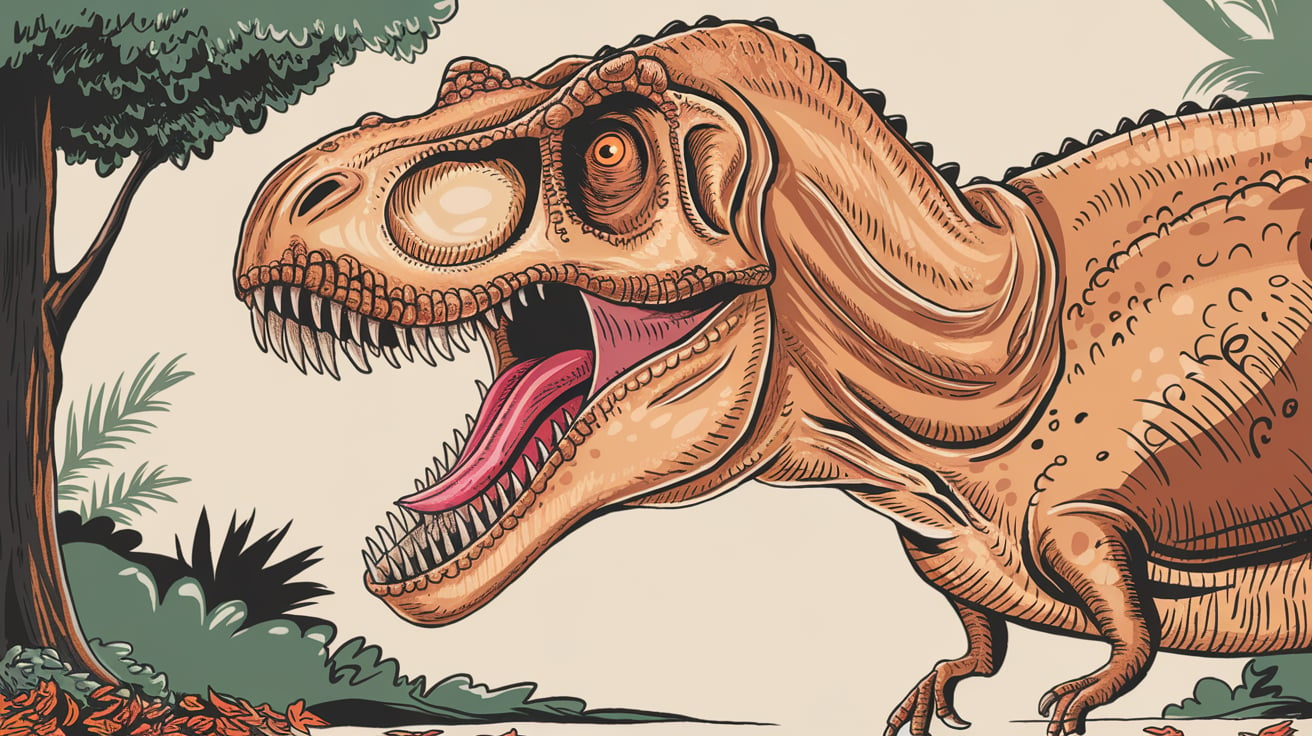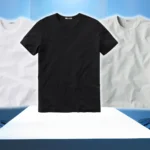Introduction to Drawing:sdn2sx5y0y0= Dinosaur
Embarking on the exhilarating journey of drawing dinosaurs opens up a world of creativity and imagination for artists of all skill levels. The process of sketching these majestic creatures offers both a rewarding challenge and an opportunity for self-expression. From iconic species like the T-rex to lesser-known varieties such as the Brachiosaurus, the allure of prehistoric beings captivates the artistic mind. This article serves as an exploration of various techniques and tips aimed at enhancing one’s drawing skills specifically tailored for capturing the essence of dinosaurs.
Each dinosaur possesses unique anatomical features, textures, and movements that artists can interpret in their own style. By understanding the structure and characteristics of these ancient reptiles, artists not only learn the fundamentals of drawing but also engage in a fascinating appreciation of natural history. The act of drawing dinosaurs fosters a connection with the past, stimulating curiosity and encouraging further exploration of paleontology through art.
Moreover, drawing dinosaurs is not confined to one approach or level of expertise. Both novice and experienced artists can find joy and excitement in this subject matter. Beginners may discover the satisfying simplicity of creating cartoonish renditions, while seasoned illustrators might delve into more intricate and scientific representations. This versatility is part of what makes drawing dinosaurs an engaging art form—each artist can reflect their individual style while joining in a shared interest.
Throughout this article, the focus will remain on the engaging techniques related to drawing dinosaurs. As we proceed, readers can expect to gain insights into various methods, from basic sketches to more advanced techniques, ensuring that every artist has the tools necessary to bring their imaginative visions of dinosaurs to life.
Understanding the Anatomy of Dinosaurs
The study of dinosaur anatomy is crucial for artists aspiring to create realistic and accurate portrayals of these magnificent creatures. Various anatomical features can significantly influence the overall appearance and proportions of a dinosaur in a drawing. Attention to details such as the head shape, limb structure, tail length, and body proportions will aid artists in achieving a lifelike representation of dinosaurs.
Starting with the head, dinosaurs exhibited diverse shapes which could often indicate their feeding habits or defensive behaviors. For example, theropods like the Tyrannosaurus rex displayed large, robust heads equipped with sharp teeth, suited for carnivorous diets, while herbivorous dinosaurs like the Triceratops boasted broad, flat heads adorned with bony frills and horns. Understanding these variations is vital in creating accurate facial features in your drawing:sdn2sx5y0y0= dinosaur.
When observing limbs, artists should note both the posture and articulation. Dinosaurs ranged from bipedal to quadrupedal stances, meaning artists must be adept at capturing movement and balance in their representations. The powerful hind limbs of a velociraptor, for instance, contrasted with the thick, columnar legs of a Apatosaurus. Furthermore, the details of muscle structure and joint articulation contribute to the authenticity of the motion portrayed.
The tail is another significant feature, as it often served various functions, such as balance, communication, or defense. For example, the long tail of the Diplodocus provided balance while moving, while other species might have used their tails for swatting away insects or intimidating threats. Artists should pay particular attention to the tail’s length and curvature to reflect how it complements the body.
Lastly, the body structure must be considered as a whole. Dinosaurs varied from the slender, agile forms of smaller species to the massive, robust build of larger ones. Artists must understand these differences to effectively illustrate a drawing:sdn2sx5y0y0= dinosaur, ensuring accurate portrayal of its proportions and dimensions. By grasping these anatomical details, artists can enhance the quality and impact of their dinosaur illustrations.
Gathering Inspiration for Your Dinosaur Drawings
When embarking on the creative journey of drawing:sdn2sx5y0y0= dinosaur, it is essential to gather inspiration from various sources. One of the most fruitful ways to fuel your imagination is to explore nature. Observing the diverse forms and behaviors of modern-day animals can provide insights into how dinosaurs might have looked and behaved. Birds, reptiles, and even large mammals can serve as a reference for physical characteristics and movement patterns, facilitating a more realistic depiction of dinosaurs in your artwork.
In addition to nature, documentaries offer a wealth of visual and educational resources. Programs dedicated to paleontology and prehistoric life often feature computer-generated imagery, showcasing how dinosaurs might have roamed the Earth. These documentaries not only present factual information but also inspire artistic interpretations and help understand the environments in which these magnificent creatures thrived. Engaging with these films allows you to visualize the textures and colors that can be integrated into your own drawings, enhancing their authenticity.
Furthermore, exploring the works of other artists can ignite your creative spark. Art communities, galleries, and online platforms like social media enable you to connect with fellow illustrators and view their interpretations of dinosaurs. Analyzing their unique styles, compositions, and techniques can provide motivation to experiment with different approaches and refine your drawing skills. Resources such as dedicated dinosaur books and instructive online tutorials can also serve as valuable guides, offering step-by-step processes for specific drawing techniques.
By immersing yourself in various sources of inspiration and allowing your creativity to flourish, you will not only enhance your skills but also develop a deeper appreciation for these extraordinary creatures. Utilizing these ideas will ultimately help you create more engaging and dynamic representations in your drawing:sdn2sx5y0y0= dinosaur projects.
Essential Tools and Materials for Drawing Dinosaurs
Creating engaging and realistic representations of dinosaurs requires a variety of tools and materials that cater to different artistic levels. For beginners, a simple set of graphite pencils ranging from H to B grades is essential. H pencils are ideal for light sketching, while B pencils allow for deeper shading, crucial for rendering the textures commonly found in dinosaurs. Additionally, a soft eraser can help refine sketches and remove mistakes without damaging the paper.
Choosing the right paper is equally important in the drawing process. For pencil drawings, a smooth drawing paper with a weight of at least 200 gsm is preferable, as it supports multiple layers of shading without warping. More advanced artists may explore specialized papers like Bristol board, which can handle inks and colored pencils effectively, providing a versatile support for various techniques employed in dinosaur illustrations.
For those wishing to introduce color into their dinosaur artwork, colored pencils are a great option. Brands like Prismacolor or Faber-Castell offer rich pigments and varying degrees of softness, making it easier to blend colors for a more lifelike appearance. Markers and watercolors also serve as excellent mediums for adding vibrant hues, creating dramatic effects that can capture the viewer’s attention. When using these mediums, a mixed-media paper can help achieve better results, supporting both wet and dry applications.
Additional supplies, like a ruler for straight lines, a color wheel for palette choices, and blending stumps for smooth transitions, can significantly enhance the drawing experience. Sketchbooks that are portable provide artists with a convenient way to practice anywhere, fostering creativity. Overall, the right selection of tools and materials will not only improve the quality of dinosaur drawings but also enrich the artistic journey, making it more enjoyable for both novice and expert artists alike.
Basic Drawing Techniques for Dinosaurs
When embarking on the journey of drawing dinosaurs, it is important to grasp fundamental techniques that can enhance your artistic capabilities. One of the primary methods to start is sketching. As with any subject, capturing the basic shapes and forms of a dinosaur is crucial. Begin by breaking the creature down into simple geometric shapes. For instance, use circles for the head and joints, and cylinders for the limbs and tail. These shapes serve as guidelines, allowing you to outline the dinosaur’s proportions accurately before refining the details.
Once the initial sketch is in place, shading comes into play as a vital technique that adds depth and dimension to your drawing. Understanding light and shadow is essential; consider where the light source is and how it affects the dinosaur’s form. For a more realistic representation, apply shading with a gentle gradient using a pencil, layering darker shades in areas that would naturally be in shadow, such as underbelly or behind the limbs. Blending techniques can also enhance the smoothness of these transitions, giving your dinosaur an appealing three-dimensional quality.
Texture is another important aspect of drawing dinosaurs. Each species may have different skin textures, from the smoothness of a sauropod’s skin to the rough, scaly appearance of a theropod. To convey these textures, you can utilize various mark-making techniques such as cross-hatching, stippling, or even dry brush techniques if using paint. Experimenting with these methods will lend distinctiveness to your drawings and help convey the unique characteristics of each dinosaur. Ultimately, mastering these basic techniques—sketching, shading, and creating texture—sets a solid foundation for anyone looking to enhance their skills in drawing dinosaurs.

Creating Dynamic Poses for Your Dinosaurs
When it comes to drawing a dinosaur, capturing the essence of its movement is essential for conveying life and vitality in your artwork. Dinosaurs, with their diverse forms and postures, present a fascinating challenge for artists seeking to create dynamic poses. Understanding the principles of motion and perspective is crucial in achieving this goal. By studying how these magnificent creatures might have moved in their natural environments, you can lend authenticity and excitement to your drawings.
One effective technique for creating dynamic dinosaur poses is to observe the body mechanics of modern animals. For example, looking at the posture of birds can provide insight into the way a raptor may have moved, or examining large mammals can help in understanding the stance of a theropod. Analyzing the balance, weight distribution, and limb articulation of these living creatures can serve as a reference for your dinosaur illustrations.
Additionally, employing the principles of gesture drawing can significantly enhance your skills in depicting movement. Start by sketching loose and fluid lines to represent the overall energy and direction of your dinosaur. Focus on the arcs and rhythms that exist within the pose, rather than getting bogged down in details initially. Once you establish a solid foundation, you can refine the elements of your drawing, helping to ground your dinosaur in the pose you have chosen.
Moreover, consider the environment surrounding your dinosaur. Is it leaping from a cliff, running through a forest, or nimbly navigating rocky terrain? Contextual elements such as foliage, rocks, or other creatures can interact with your dinosaur’s pose, creating a sense of action and urgency. By thoughtfully integrating these components, your drawings of dinosaurs will evoke a stronger emotional response and appear more lifelike.
In conclusion, the art of creating dynamic dinosaur poses involves a comprehensive understanding of movement, balance, and anatomical accuracy. By observing real-world creatures and employing gesture drawing techniques, artists can breathe life into their dinosaur depictions, making them vibrant and engaging for viewers.
Coloring Your Dinosaur Drawings
Adding color to your dinosaur drawings can significantly enhance their visual impact and bring them to life. To effectively color your sketches, it is essential to understand basic color theory, which includes concepts such as the color wheel, complementary colors, and the emotional effects of colors. A well-chosen color palette will not only represent your vision of dinosaurs but also evoke the right feelings and atmosphere in your artwork.
When coloring your dinosaur drawings, start by selecting a color scheme that complements your creative intent. For instance, if you envision a vibrant, lively dinosaur, consider using bright hues such as greens, blues, or reds. Conversely, if you wish to portray a more ominous or prehistoric vibe, muted earth tones like browns and grays can be effective. Remember that dinosaurs inhabited diverse environments and climates; hence, their coloration can be inspired by the theories and research surrounding their habitats.
Utilizing different coloring techniques can also enhance your drawings. One popular method is layering colors to create depth and dimension. Begin by applying a base coat with a lighter shade, followed by layering darker hues in specific areas to suggest shadows and light. Blending colors can yield a more natural appearance. Techniques such as dry brushing, stippling, and wash can also contribute unique textures and effects to your dinosaur sketches.
Moreover, experimenting with mixed media—combining traditional drawing tools like colored pencils with digital coloring methods—may provide exciting results. This approach allows for greater flexibility in your coloring process, enabling you to easily correct mistakes or enhance specific elements of your rendering. Ultimately, incorporating these techniques will not only make your drawing:sdn2sx5y0y0= dinosaur representations more realistic but will also help in articulating your artistic vision.
Final Touches and Refinements
Once the main structure and initial details of your dinosaur drawing are established, the journey to a polished piece of art is not yet complete. Adding final touches and refinements can significantly elevate your work, transforming a rough sketch into a stunning illustration. To begin, focus on enhancing the details that define the unique characteristics of the dinosaur. This may include the texture of its skin, the intricacies of its scales, or the nuances of its facial features. Using finer pens, pencils, or brushes allows for more precision in these areas, bringing your dinosaur to life with realistic details.
Next, consider adjusting the proportions of your drawing. Many artists find that stepping back and viewing their work from a distance can reveal areas that need proportion adjustments. Pay attention to the dinosaur’s features in relation to its body size, ensuring that limbs, head, and tail are in harmony. This can enhance the overall believability of your drawing, making it more relatable to the viewer. You may find it helpful to compare your drawing against reference images of similar dinosaurs to gauge accuracy.
Texture is another critical aspect that can be fine-tuned. Using various shading techniques, such as cross-hatching or stippling, can add depth and dimension to your dinosaur. Layering different shades will create a more dynamic visual experience, allowing colors and shades to blend naturally. Finally, don’t hesitate to make any necessary adjustments to the background, ensuring it complements your dinosaur drawing without overwhelming it. The combination of well-executed details, refined proportions, and rich textures culminates in a cohesive artwork that captivates and engages.
Showcasing and Sharing Your Dinosaur Art
Once you have completed your dinosaur drawing, the next crucial step involves showcasing and sharing your art with others. In today’s digital age, numerous online platforms offer excellent opportunities for artists to display their work and connect with the art community. Websites such as DeviantArt, ArtStation, and Behance serve as ideal venues for posting your dinosaur illustrations. These platforms not only allow you to upload your artwork but also facilitate interactions with other artists and art enthusiasts, enabling you to gain valuable insights and inspiration.
Social media also plays a pivotal role in sharing your dinosaur-themed creations. Platforms such as Instagram, Twitter, and Facebook are popular among artists and enable you to reach a wider audience. For effective engagement, consider using relevant hashtags like #DinosaurArt, #DrawingDinosaurs, or #DinosaurIllustration. Such tags can enhance the visibility of your drawings, attracting those who share a similar passion for prehistoric creatures. When sharing on social media, sharing your creative process, such as time-lapse videos or work-in-progress updates, can further engage your audience.
Moreover, it is essential to seek feedback and critique from others. Engaging with fellow artists can help you refine your skills and gain different perspectives on your dinosaur artwork. Participating in online forums and art critique communities can provide a safe space for artists to discuss their work openly. Constructive criticism allows you to identify areas of improvement while celebrating your strengths. Remember, sharing your completed dinosaur drawings is just as important as the creation process itself, as it fosters a sense of community and encourages growth as an artist.
you may also read


